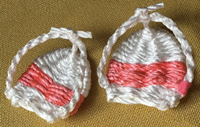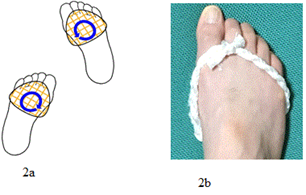Commentary :
The
InternationalOlympic Committee (IOC) session in 2013 had chosen Tokyo as the host city
for the 2020 Olympic and Paralympic Games (Tokyo 2020 Games). After that, the
preparation organization for Tokyo 2020 Games was established and Japan Olympic
Committee (JOC), Japan Paralympic Committee (JPC) and other committees have
continued various activities [1]. Thus, further development of international
friendship and sports promotion has been expected. It can give various
beneficial influences for wide range of sports, medical, economic and social
fields [2]. There
are many kinds of sports, in which the basic category would be the athletics.
The authors have been involved in JapanMasters Athletics (JMA) so far, and have continued to give masters
athletics runners various lectures by workshops, books and medical articles
[3,4]. Currently, we have been coaching several candidates for the Paralympic
Games who may have won in the Tokyo Paralympic Games. Furthermore,
we have advised mainly Masters Athletics players on how to run faster and safer
without any injuries. There are several important tips, such as two-axis
running, soft landing way and stretching using pole method [5,6]. The ideal
running style is to run without excessive tension or force. There is certain
footwear for the practice of better running. Using them, the athletes can get a
relaxed walk and good run without injuries. Authors have continued workshops so
that the athletes
can get a good run. In this article, we would like to introduce certain footwear
and explain the beneficial effects. There
have been Ashinaka,
which was worn on the soles of the foot. This name is from the following
Japanese language, in which Ashinaka means Ashi (foot) and naka (half, medial,
center). Then, it means half foot training footwear, and actually it covers the
front half of the sole. It has been originally made of rice straw, and utilized
well for long years until now [7]. Authors can make the same footwear by
knitting with thick plastic straps (Figure
1). There is a strap at the center of the front, and it is fixed to foot by
pinching it with the first and second fingers of the toes. It covers the front
half of the sole where there is a strong Anterior
Transverse Arch (ATA) [8]. Thus, Ashinaka has an important role to absorb
the impact from the ground. On
the other hand, Ashinaka does not cover the toes and heels. The characteristic
point would be that the toes often protrude forward and float, and usually does
not put a force on the 1st finger (thumb). In order to stop suddenly the body
motion, the toes sometimes put a force and touch the ground. In contrast, the back
half of the foot, including the heel, always touches the ground directly and
plays a role of preventing slippery. Through
the running practice using Ashinaka, three main effects would be shown. The
first is not to put great force on the toe of the foot [9]. As we usually
wearing shoes, all fingers of the foot are protected in the shoes. We sometimes
put great force on the toe of the foot, kick it, and move the body forward. On
the other hand, the five fingers of the foot slightly protrude forward when
wearing Ashinaka.
Then, the fingers can touch the ground slightly, leading to better sensation of
the toes and soles. The
second is to adjust the arch of the foot [10]. There is an important foot
triangle in the foot. It is always supported by three points, which are MP
joints of 1st/5th fingers and heel. Body weight is well-balanced on
the foot triangle [11]. Therefore, no extra loading has been imposed on each of
three arches. As a result, the burden and stress on the foot can be reduced,
and injuries
such as plantar fasciitis can be prevented. Furthermore, the center of gravity
of the body is situated on not the front ATA, but rather rear position in the
foot. Consequently, the runner can relax and lean forward without putting
unnecessary tension in the trunk [10]. The
third is to induce the internal rotation of the hip
joint. When we usually walk or run, the foot turns somewhat inward. For the
shoes we usually wear, internal rotation may be difficult due to the friction
between the sole and the ground. On the other hand, there is an important part
just below the ATA [12]. Here, it is knitted in red color as shown in (Figure 1) so as to recognize this
area. It plays a role of smoothly turning the foot inward, in addition to the
role of cushioning [13] (Figure 2).
Furthermore, the first and second fingers of the foot can hold the strap
(thong) tightly with stability for the movement. This movement becomes
clarified when the pelvic part is tightly fixed by a wide belt. The back and
forth movement of the femur is limited, and the flexion and extension movement
of the hip
joint is also limited. On the other hand, the movement of the internal and
external rotation of the hip joint becomes remarkable. These exercises will
make the lower extremities move more smoothly.
Figure 1: Ashinaka (half foot
training footware) which was made by the authors. Figure 2: Walking and
running of the foot associated with Ashinaka (half foot training footware). In
summary, the power to change the society exists in sports, and among them
athletics exists as fundamental region. The authors have advised Masters
Athletes for better running practices with less injury. In this article, Ashinaka
(half foot training footwear) are shown with various usefulness. We hope that this
description will become reference for future development. 1.
Aoyagi
S, Ikeda H. Nutrition and Enhanced Sports Performance (2nd Ed) (2019) Muscle
Building, Endurance, and Strength, USA 239-243. https://doi.org/10.1016/B978-0-12-813922-6.00020-5. 2.
Gerrett
N, Kingma BR, Sluijter R and Daanen HA. Ambient conditions prior to Tokyo 2020
Olympic and Paralympic games. Considerations for acclimation or acclimatization
strategies (2019) Front Physiol. https://doi.org/10.3389/fphys.2019.00414 3.
Murakami
M, Bando H. Smooth Running without Power on Sole Hallucal Area (2018) Res Inves
Sports Med 3. http://dx.doi.org/10.31031/rism.2018.03.000573 . 4.
Bando
H and Murakami M. The important points in plantar region for relaxed standing
and running (2018) Res Rev Orhop 2:7-9. 5.
Moriyasu
A, Bando H, Murakami M, Inoue T, Taichi A, et al. Pole exercise causes body
changes in physical flexibility and exercise function (2018) J Nov Physiother 8:377. https://doi.org/10.4172/2165-7025.1000377 . 6.
Murakami
M and Bando H. Forward leaning and two axis operation for effective and safe
running (2018) Sports Med Rehabil J 3:1042. 7.
Koda
S, Smith NS. Communication Materials on Japanese social and economic history:
Tokugawa Japan (1937)
P.S. King, London. 8.
Zeidan
H, Suzuki Y, Kajiwara Y, Nakai K, Shimoura K, et al. Comparison of the changes
in the structure of the transverse arch of the normal and hallux valgus feet
under different loading positions (2019) Appl Syst Innov 2:3. 9.
Bando
H, Murakami M. Arches and points in the
foot of running athletes (2019) J Nov Physiother 9:405. 10.
Welte
L, Kelly LA, Lichtwark GA and Rainbow MJ.
Influence of the windlass mechanism on arch-spring mechanics during
dynamic foot arch deformation (2018) J R Soc Interface 15:20180270. http://dx.doi.org/10.1098/rsif.2018.0270 . 11.
Maas
NM, van der Grinten M, Bramer WM and Kleinrensink GJ. Metatarsophalangeal joint
stability: a systematic review on the plantar plate of the lesser toes (2016) J
Foot Ankle Res 9:32. https://doi.org/10.1186/s13047-016-0165-2 12.
Bito
T, Tashiro Y, Suzuki Y, Kawagoe M, Sonoda T, et.al Forefoot transverse arch height asymmetry is
associated with foot injuries in athletes participating in college track events
(2018) J Physical Therapy Sci 30:978–983. https://dx.doi.org/10.1589%2Fjpts.30.978 Murakami M, Bando H. Same Directionality of Foot Straight
Line and Forward Movement (2019) ARC J of Research in Sports *Corresponding author:Hiroshi Bando, Medical Research, Tokushima
University, Japan, Tel: +81-90-3187-2485, E-mail: pianomed@bronze.ocn.ne.jp Japan olympic committee, Japan paralympic committee,
Anterior transverse arch, Japan masters athletics, Ashinaka. Half Foot Training Footwear for Safer and Faster Running from Masters Athletes to Professional Athletes
Mitsuru Murakami and Hiroshi Bando
Abstract
Full-Text


References
Citation: Murakami M and Bando
H. Half foot training footwear for safer
and faster running from Masters Athletes to professional athletes (2019)
Neurophysio and Rehab 2: 24-25 Keywords